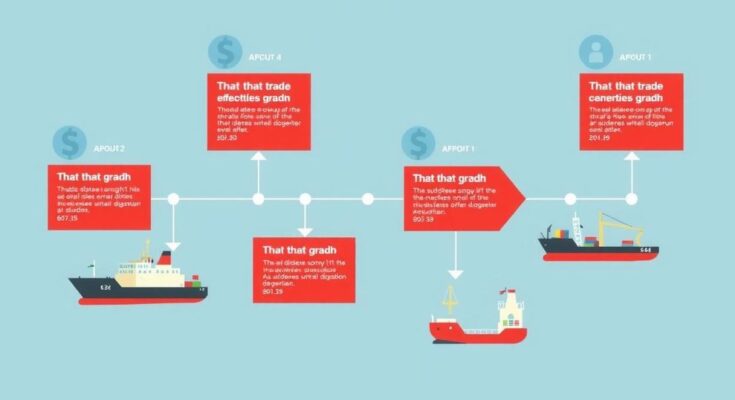This article outlines the recent trade war initiated by President Trump, focusing on tariffs imposed on Mexico, Canada, and China. The timeline details the escalation of trade tensions, the back-and-forth nature of tariffs, and the potential economic repercussions for both U.S. consumers and global economies.
The ongoing trade war initiated by U.S. President Donald Trump has escalated since he took office, focusing heavily on tariffs against Mexico, Canada, and China. New levies were introduced, causing significant repercussions, including market instability and rising consumer prices. Economists warn of severe impacts on global economies and business operations due to the uncertainty surrounding these tariffs.
Trump’s initial trade war during his first term primarily targeted China, resulting in a cycle of tariffs on goods worth hundreds of billions of dollars. The conflict centered on allegations that China employed unfair trade practices, including intellectual property theft and technology coercion. In response to U.S. tariffs, China implemented its own retaliatory tariffs on a range of American products.
After President Joe Biden assumed office, he largely retained Trump’s existing tariffs against China but adopted a more focused strategy. Biden’s administration has since imposed additional restrictions on semiconductor transfers and increased tariffs on various Chinese imports. These actions have drawn a mixed response, indicating a continuation of tension between the U.S. and China.
As the 2024 presidential campaign approached, both Biden and Trump took stances on tariffs, with Trump suggesting dramatic increases, while Biden’s campaign emphasized the potential detrimental economic impact of such measures. Following Trump’s win in the November election, he reaffirmed his commitment to substantial tariff increases.
In the early weeks of his new term, Trump initiated executive orders for tariffs on imports from Mexico, Canada, and China. Triggered by national security concerns and immigration issues, these tariffs solidified the tensions. The imposition of these tariffs faced backlash and threats of retaliation from affected nations, leading to a series of back-and-forth responses that marked the beginning of a renewed trade war.
This renewed trade situation has not only affected bilateral relations but has also prompted trade partners to announce retaliatory tariffs. For instance, Canada and Mexico quickly devised their strategies in response to U.S. measures, indicating a comprehensive and dynamic exchange of trade hostilities. The backtracking of some tariffs in response to negotiations points to the complex nature of international trade relations.
The timeline depicts the increasing complexity of the trade war, showcasing the significant escalation in tariffs and the intricate web of international responses. Analyzing these developments reveals a landscape fraught with volatility, where many businesses remain uncertain about future trade conditions, highlighting the urgent need for clarity and stability in U.S. trade policies.
In summary, the revitalized trade war under President Trump represents a significant escalation in U.S. trade policy, particularly towards Mexico, Canada, and China. With tariffs imposed and countered, the landscape of international trade is increasingly volatile. The potential for adverse economic effects remains a central concern as businesses and consumers navigate this complex environment. A clearer direction in trade policy is essential to mitigate ongoing uncertainties and foster stable economic relations.
Original Source: apnews.com




